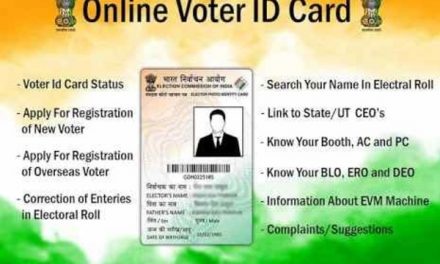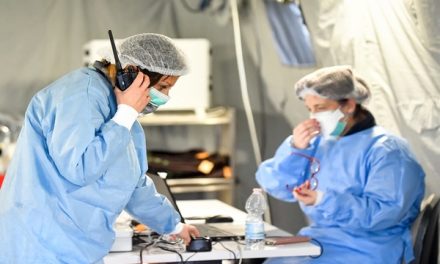What is COVID-19
A new respiratory virus that caused severe pneumonia was first identified in Wuhan City, Hubei Province, China. The virus is now spreading person-to-person in growing numbers in greater than 50 countries, but 94% of cases are in China.
What is a novel Coronavirus
Coronaviruses are a large family of viruses that are common in humans, and others, such as animals. Occasionally, we see new (novel) coronaviruses that have not previously been described in humans. There are many types of human coronaviruses, including some that commonly cause mild upper-respiratory tract illnesses.
This virus was originally thought to have emerged from an animal source that infected humans, but now we are seeing the virus spread from person to person. At this time, it is unclear how easily this virus is spreading between people.
How does COVID-19 spread?
The current understanding of how this virus causes COVID-19 is based on what we know about coronaviruses in general. This virus is spread mostly from person to person. Like the common cold, it is spread by droplets, which are often generated when a person coughs or sneezes. One can be exposed when in close contact (within 6 feet) to someone who is sick. People are thought to be most contagious when they have symptoms. There have been reports of people becoming sick after contact with someone with little to no symptoms (asymptomatic) but this is not thought to be the main method of the virus spreading in the community.
The latest areas of sustained community spread include China, South Korea, Japan, Iran, and Italy.
How easily does it spread in a community?
The virus that causes COVID-19 seems to be spreading easily and sustainably in a community where it is thought that for every 1 person that is infected, that potentially 2 other people can get the infection if they do not protect themselves with simple preventive measures, such as hand hygiene. There has been a description of one infected person spreading to more than 2 but these are rare scenarios.
This virus is thought to be more contagious than the seasonal flu but much less than other highly contagious viruses, such as measles or chickenpox.
What are the common misconceptions about coronavirus?
Misconception: It spreads through air
Truth: One of the common misconceptions of coronavirus infection is that it can spread through the air. However, it is mainly transmitted through contact with respiratory droplets.
Misconception: It spreads through faeces
Truth: The risk of catching COVID-19 from the faeces of an infected person appears to be low. While initial investigations suggest the virus may be present in faeces in some cases, spread through this route is not a main feature of the outbreak.
Misconception: It spreads through an animal source
Truth: Possible animal sources of COVID-19 have not yet been confirmed. However, for protection, while visiting live animal markets, avoid direct contact with animals and surfaces in contact with animals. Ensure good food safety practices at all times. Handle raw meat, milk or animal organs with care to avoid contamination of uncooked foods and avoid consuming raw or undercooked animal products.
Misconception: It spreads through pets
Truth: There is no evidence that pets such as cats and dogs have been infected or could spread the virus that causes COVID-19.
Misconception: Antibiotics can prevent or treat coronavirus
Truth: No, antibiotics do not work against viruses and only work on bacterial infections
What to do to prevent getting infected?
Everyday preventive actions to help prevent the spread of respiratory viruses will work with this novel coronavirus. Those actions include:
- Wash your hands often with soap and water for at least 20 seconds. Use an alcohol-based hand sanitizer that contains at least 60% alcohol if soap and water are not available.
- Avoid touching your eyes, nose, and mouth with unwashed hands.
- Avoid close contact with people who are sick.
- Stay home when you are sick.
- Cover your cough or sneeze with a tissue, then throw the tissue in the trash.
- Clean and disinfect frequently touched objects and surfaces.
- Follow CDC’s recommendations for using a facemask.
- CDC does not recommend that people who are well wearing a facemask to protect themselves from respiratory diseases, including COVID-19.
- Facemasks should be used by people who show symptoms of COVID-19 to help prevent the spread of the disease to others. The use of facemasks is also crucial for health workers and people who are taking care of someone in close settings (at home or in a health care facility).
What are the symptoms and complications of the virus that causes COVID-19?
Current symptoms reported for patients with COVID-19 have included mild to severe respiratory illness with fever, cough, and difficulty breathing.
Symptoms may appear 2-14 days after exposure*:
- Fever
- Cough
- Shortness of breath
How can you detect coronavirus?
The incubation period ranges from 1-14 days, most commonly around five days. After early symptoms appear, there are three rounds of tests that need to be done to confirm if someone is infected. They are then kept in isolation.
What is the cure for coronavirus?
There are no vaccines and no specific medicines to prevent or treat coronavirus. However, hospitalisation and care is very important for recovery. Possible vaccines and some specific drug treatments are under investigation. They are being tested through clinical trials.
All countries are taking preventive measures to control the disease and working closely with health experts to contain it. As research continues on the disease, its advisable to not panic and not pay heed to rumours about the virus.
Who should be concerned about getting COVID-19?
If you develop a fever and symptoms of respiratory illness, such as cough or shortness of breath within 14 days after travel from an affected areas (as listed above: China, South Korea, Japan, Iran, and Italy), you should call ahead to a health care professional and mention your recent travel or close contact.
OR
If you have had close contact with someone showing these symptoms who have recently traveled from these areas, you should call ahead to a healthcare professional and mention your close contact and their recent travel. Your healthcare professional will work with your state’s public health department and CDC to determine if you need to be tested for COVID-19.
Also read: Coronavirus: Decade-old medicine Actemra emerges as hope for victims











